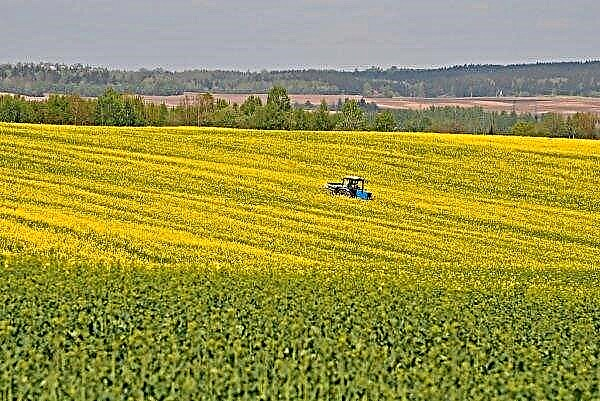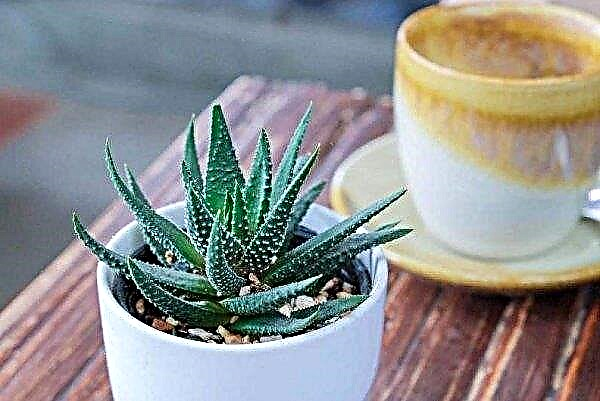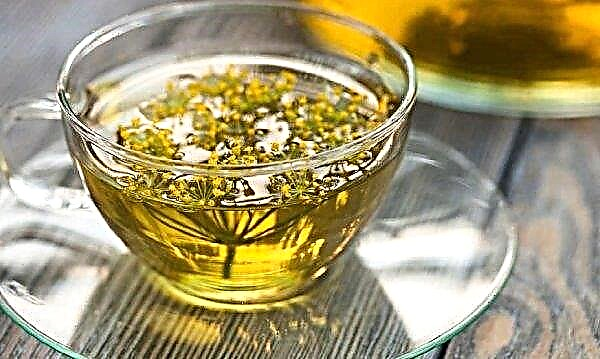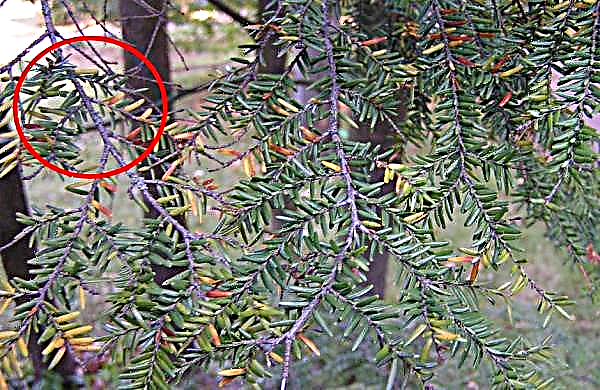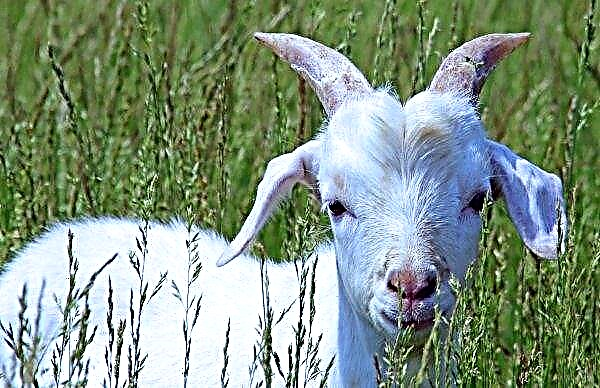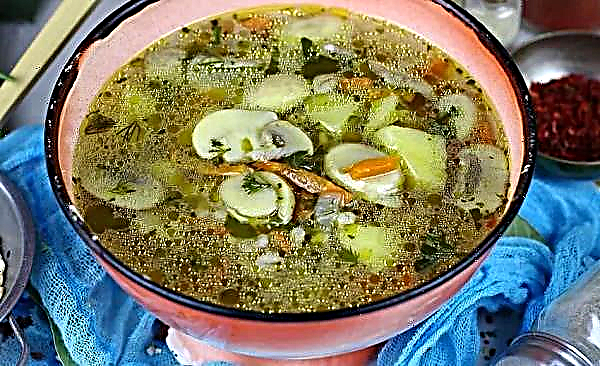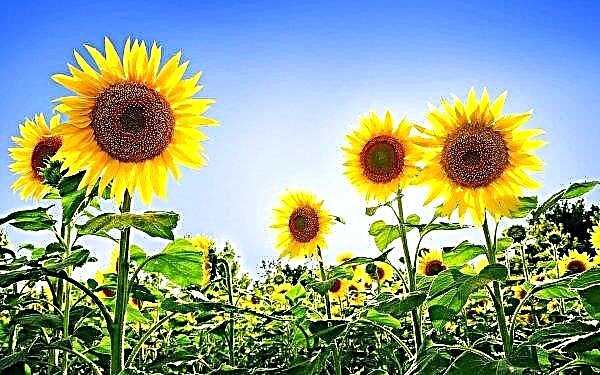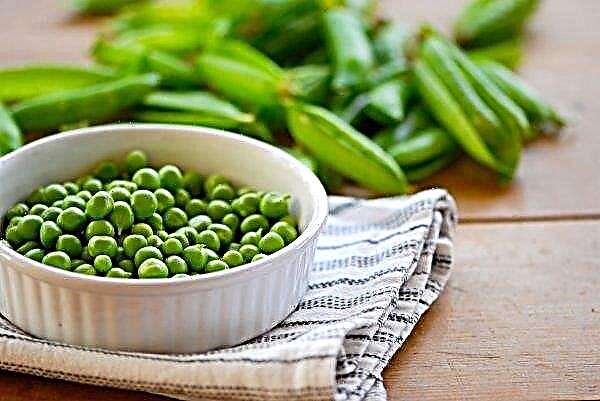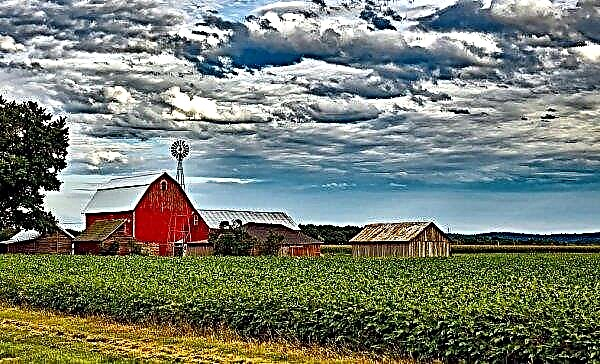There are varieties of tomatoes that have been respected by experienced gardeners for many years. The variety "De Barao", bred back in the nineties of the XX century, also belongs to them. The highest level of yield, transportability, shelf life, as well as impressive taste characteristics, help to find more and more people who want to engage in its cultivation.
Variety varieties
With many advantages, De Barao impresses with its abundance of varieties, which have many similar characteristics, but are still slightly different:
- Orange - characterized by the presence of a high level of carotene; its fruits are bright, orange, in the form of a plum, each weighing up to 100 g, it can be used both for preservation and preparation, and for fresh consumption, in salads; bushes are able to grow up to 3 meters in height; It is intended for cultivation both in a greenhouse, and in the open area;
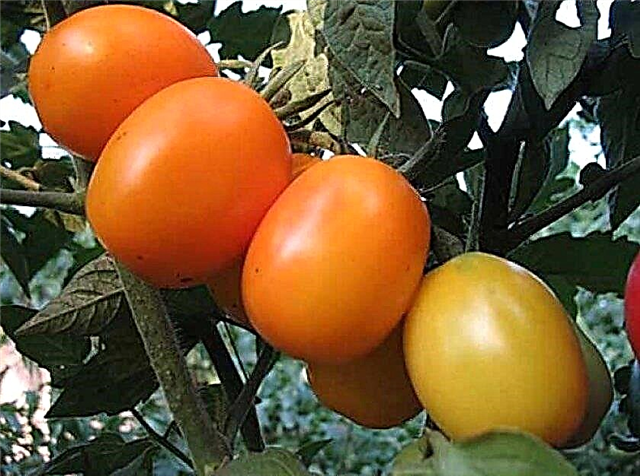
- giant - It is intended mainly for growing in hotbeds, but it also feels pretty good in open ground, where plants are able to bloom and bear fruit before the arrival of autumn; the bush is characterized by thickness and considerable height; has large oblong red fruits weighing up to 210 g;

- pink - less productive subspecies among the rest, the yield of one bush is from 3 to 4 kg; the fruits have an unusual pink color, weighing up to 70 g, tasty, thick-skinned; It is especially resistant to diseases even in conditions of high humidity;

- royal - a rare subspecies of tomato "De Barao", the seeds of which are rarely found on sale, red with a pink tint fruits weighing up to 130 g can ripen until the temperature drops significantly; on each bush, up to ten brushes are formed, up to seven fruits may appear on a single brush;
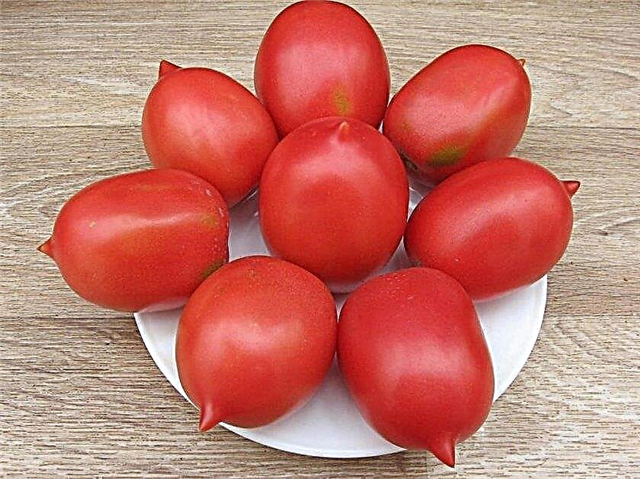
- the black - an infrequently encountered ancient subspecies, is distinguished by a rather unique fruit, in which the burgundy color is interwoven with a blackish tint; the fruits are dense, suitable for blanks in general;

- gold (or folk yellow) - different content of significant levels of carotene, very useful; characterized by abundant productivity, for the period of seasonal cultivation it is possible to get up to 7 kg of fruit;
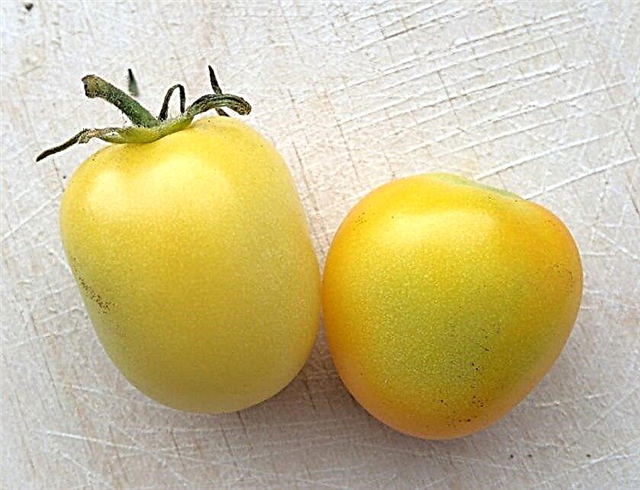
- red - Suitable for both greenhouses and open spaces; bushes reach a height of up to two meters; full ripening of fruits occurs over a period of 120 to 130 days, from one plant the yield is up to 4 kg; tomatoes are medium in size, weighing up to 90 g;

- striped or brindle - named for the color of ripened fruits when their red color is diluted with clearly visible brown stripes; retains resistance to late blight; oval fruits weighing up to 70 g, are dense, have good taste characteristics, are suitable for canning in general.

The main advantages of the variety
The variety "De Barao" combines a number of positive features that make it attractive for growing:
- high level of productivity;
- tomatoes ripen together;
- tomatoes grow and feel good even without special access to sunlight;
- fruiting occurs almost before frost, is cold-resistant;
- tomatoes continue to grow even after the appearance of the expected number of brushes;
- resistant to late blight and other tomato diseases;
- the fruits are harvested both in processed form and in its entirety;
- the ability of tomatoes for long-term storage;
- Tomatoes behave perfectly during transportation;
- the fruits have the ability to ripen during storage during premature harvesting;
- smooth and smooth surface of tomatoes contributes to their attractive appearance;
- meat flesh and excellent taste characteristics.
Important! Tomatoes "De Barao" feel good even when grown in lowlands, in the conditions of the constant appearance of morning dew.
Characteristics of the appearance of plants and fruits
Tomatoes "De Barao" are distinguished by a special appeal of appearance and its unusual variety. This is an indeterminate variety, its tall stems reach a height of one and a half to over three meters. The leaves are dark green, medium in size. The lower brushes are formed after the first ten leaves appear, a new inflorescence appears through the next three leaves. The side shoots are somewhat distant from one another. Ovoid oval fruits weigh in the range of 50-150 grams. Each subspecies has its own yield levels and they range from 4 to 15 kg per plant. Tomatoes are distinguished by high taste characteristics, have a harmonious, sweet and sour taste. Their skin and pulp are characterized by density. The color of the tomato depends on the subspecies and can be pink, orange, yellow, red, burgundy and even black. There are two chambers in the fruits.
Ovoid oval fruits weigh in the range of 50-150 grams. Each subspecies has its own yield levels and they range from 4 to 15 kg per plant. Tomatoes are distinguished by high taste characteristics, have a harmonious, sweet and sour taste. Their skin and pulp are characterized by density. The color of the tomato depends on the subspecies and can be pink, orange, yellow, red, burgundy and even black. There are two chambers in the fruits.
Growing tomato "De Barao"
Variety "De Barao" for many years enjoys well-deserved attention of gardeners and vegetable growers. But when growing these tomatoes, a number of certain conditions should be observed during sowing seeds, preparing the soil, planting seedlings and caring for them, and controlling pests and diseases.
Did you know? More than sixty million tons of tomatoes are grown annually in the world, which is the championship among vegetables.
Seed and soil preparation
To obtain a high-quality and plentiful crop, the seeds of “De Barao” must first be checked for suitability - for this, the seed material is placed in a saline solution prepared from one teaspoon of salt and a glass of water. Surfaced seeds need to be collected and discarded; those that have fallen to the bottom can be taken for sowing. Although the De Barao variety is characterized by disease resistance, the seeds should also be disinfected in a pink solution of potassium permanganate before sowing. It will not be superfluous to treat the seed with a liquid growth stimulator, following the instructions for use. The dried seeds are hardened in the refrigerator for several days.
Although the De Barao variety is characterized by disease resistance, the seeds should also be disinfected in a pink solution of potassium permanganate before sowing. It will not be superfluous to treat the seed with a liquid growth stimulator, following the instructions for use. The dried seeds are hardened in the refrigerator for several days.
Did you know? The biological origin of tomatoes does not cease to cause controversy: botanists consider them berries, in America there is an opinion that these are vegetables, and the European Union decided to attribute them to fruits.
Also, the soil should be prepared, in which it is planned to sow seeds for seedlings. It is prepared from turfy ground and friable humus, you can add mineral top dressing to it. Before sowing, the soil mixture is subjected to heat treatment in an oven or boiling water, as well as disinfection with a weak solution of potassium permanganate to destroy harmful microorganisms. Boxes for growing future seedlings must also undergo a preliminary disinfectant treatment - they should be washed with a diluted bleach solution. A drainage layer should be placed on the bottom of the boxes, and the prepared soil mixture should be poured onto it.
Boxes for growing future seedlings must also undergo a preliminary disinfectant treatment - they should be washed with a diluted bleach solution. A drainage layer should be placed on the bottom of the boxes, and the prepared soil mixture should be poured onto it.
For breeding seedlings suitable:
- wooden and plastic boxes;
- peat tablets;
- plastic cups.
Did you know? Red tomatoes are more nutritious than yellow ones.
Seeding and seedling care
Sow the seeds of this variety in late winter or early spring. Immerse them to a depth of 1 cm, covering with a layer of soil from above. After this, the seeds need to be watered, watering through a strainer with a pinkish potassium permanganate solution will not hurt. Then the container must be covered with a film, a plastic cover or glass. Every couple of days, the soil in a container or cups should be moderately watered with warm water.
After about 7 days, the first shoots should break through. Before they appear in the room, the temperature should be at + 25 ° C, after germination it must be lowered to + 15 ° C during the day and + 10 ° C at night, after seven days the temperature must again be raised to + 22 ° C during the day and + 16 ° C at night. After germination, the cover can be removed. Several times it is necessary to feed seedlings with potash and phosphorus fertilizers. It is necessary to ventilate the place where seedlings are grown, avoiding drafts. Before germination of the first sprouts on seedlings, you can not water it; further watering is carried out when the soil dries, once every three to four days.
After germination, the cover can be removed. Several times it is necessary to feed seedlings with potash and phosphorus fertilizers. It is necessary to ventilate the place where seedlings are grown, avoiding drafts. Before germination of the first sprouts on seedlings, you can not water it; further watering is carried out when the soil dries, once every three to four days.
Seedlings should be kept at the access of light. A week and a half before planting in open soil, seedlings should be hardened. To do this, for several days it is carried out daily for a couple of hours in a cool room, and later - on the street.
Important! Seedlings grown for the greenhouse, you can not harden.
Planting seedlings in the ground
About two months after sowing the seeds, the plants are ready to be transplanted into the greenhouse, seedlings in open areas should be determined only after the threat of frost disappears. First you need to prepare the soil - both in the greenhouse and in the garden. It should be carefully dug up, disinfected with boiling water or a solution of potassium permanganate. Also, the soil needs to be fertilized with organic and mineral fertilizing. When planting seedlings, the chess order is observed, in which no more than three bushes should grow on 1 m² of area. They need to be watered abundantly. It is immediately recommended to tie the plants to the supports.
Also, the soil needs to be fertilized with organic and mineral fertilizing. When planting seedlings, the chess order is observed, in which no more than three bushes should grow on 1 m² of area. They need to be watered abundantly. It is immediately recommended to tie the plants to the supports.
Outdoor tomato care
Tomatoes after planting should be regularly watered: in the hot season, they require watering once every two to three days, in the absence of sun - once every five days is enough. You need to water it with warm water in the evening or in the morning. Since De Barao is a moisture-loving variety, special attention should be paid to watering.
After a fortnight after planting the seedlings in a permanent place, it should be fed with organic fertilizers - for this, manure, mullein, chicken droppings diluted in water are suitable. Ready-made fertilizers with a similar composition are sold in specialized stores of agricultural implements.
Important! Tomatoes "De Barao" do not tolerate cultivation along with other varieties of tomatoes.
Fertilizers with organic and mineral supplements are carried out two or three more times for the entire time of growing tomatoes. For this, phosphate, potash fertilizers, a solution of ash, iodine, boric acid, ammonia and others are suitable.
When the stepsons are formed and their growth is up to 10 cm, their removal must begin, which is repeated every week and a half in the morning or evening. In this case, one stepson must be left so that there is a formation of a bush in two stems, one of which is the main one. When caring for tomatoes "De Barao", as well as for other varieties, you need to systematically loosen the ground, weed weeds.
Diseases and Pests
Variety "De Barao" is resistant to most diseases characteristic of tomatoes, including the most dangerous and common - late blight. But with prolonged rainy and cool weather, late blight and other infections can also occur in these tomatoes. They have white spotting, gray rot. Therefore, tomatoes "De Barao" need preventive treatment with fungicides, infusion of garlic.
Did you know? Eating tomatoes can cleanse the human body of harmful substances obtained from inhaling cigarette smoke.
If the defeat of fungal diseases still occurs, then first of all you need to remove the affected leaves, stems, fruits or whole plants, and burn them. With a lack of calcium in the soil and poor watering, tomato disease may cause rot rot. To fix the problem, calcium-based fertilizing (calcium nitrate) is added to the ground, the plants are treated with a solution of wood ash, plants are abundantly watered.
Threatening plant health and harmful insects, among which are most often found:
For preventive purposes and to combat them, insecticides are used. If unwillingness or inability to use chemicals can be used to treat plants and soil near them with ash or tobacco dust. The husk from onions and a decoction based on celandine also helps.Hot peppers in the amount of 1 teaspoon per 1 m² of area can help protect tomatoes from slugs. To overcome the bear is capable of special poison bait, which is laid in the aisles. It can be purchased at specialized stores.
Growing tomatoes "De Barao" - in general, a simple process, if you approach it competently and systematically. With careful care, in compliance with all the rules, these tomatoes are able to please every gardener who decides to plant them.









